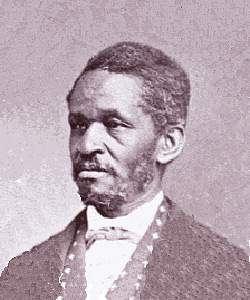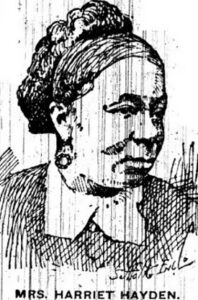Lewis and Harriet Hayden escape slavery in Kentucky with the help of Underground Railroad operatives and spend the next decade assisting freedom seekers as part of Boston’s antislavery vigilance committee
Date(s): escaped 1844
Location(s): Lexington, Kentucky; Detroit, Michigan; Canada West; Boston
Outcome: Freedom
Summary:

Lewis Hayden (National Park Service)
Lewis Hayden lost his family to the internal slave trade in the 1830s. Kentucky statesman Henry Clay reportedly sold Hayden’s first wife, Esther Harvey and their son. Fearing that the same fate awaited him, Hayden and his new wife, Harriet Bell, decided to run away. In 1844, the Haydens (Lewis, Harriet, and Harriet’s son from a previous marriage) escaped using a carriage and driver provided by white abolitionists Calvin Fairbank and Delia Webster. The Haydens successfully reached Detroit and later Canada, but Kentucky officials caught up with the two abolitionists and convicted them under the state’s harsh slave-stealing statutes. Neither Fairbank or Webster stopped their Underground Railroad activism, even though Fairbank spent four years and Webster spent two months in prison for assisting the Haydens. Meanwhile, the Haydens relocated to Boston, where they became active members of the city’s antislavery vigilance committee and regularly sheltered freedom seekers in their home at 66 Phillips Street. In 1850, Lewis and Harriet sheltered freedom seekers William and Ellen Craft and threatened to blow up their house if the slave catchers pursuing the couple dared enter. Lewis Hayden also entered politics, winning political patronage as messenger for Massachusetts’s Republican secretary of state and serving a single term in the Massachusetts legislature in 1873.

Harriet Hayden (National Park Service)
Related Sources
Related Essays
- H. Robert Baker, State Laws and Freedom Seeking
- Gordon S. Barker, Reconsidering the Underground Railroad in Canada West
- RJM Blackett, Epilogue
- Anthony Cohen, Five Steps to Understanding Freedom Seekers
- Kathryn Grover, The New England Network to Freedom
- Cheryl Janifer LaRoche, Religion and the Underground Railroad
- Kate Clifford Larson, Women on the Underground Railroad
- Manisha Sinha, The Abolitionist Underground
